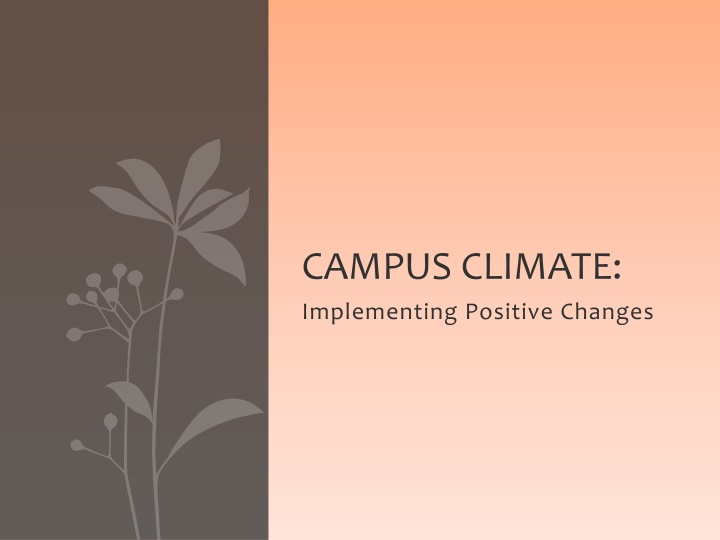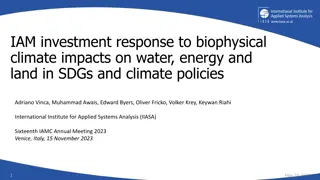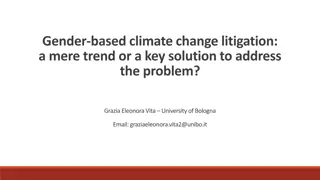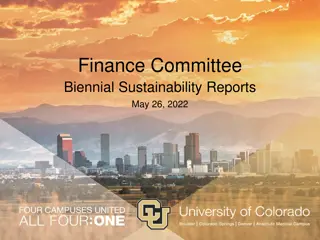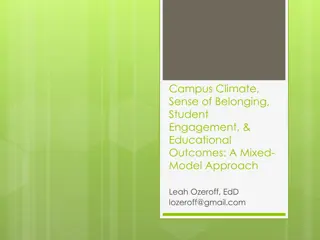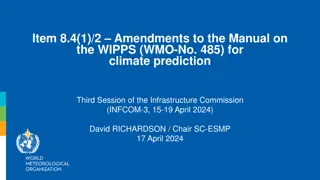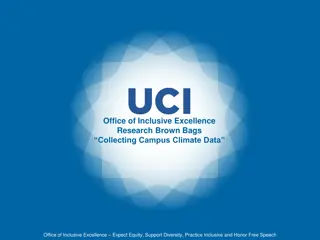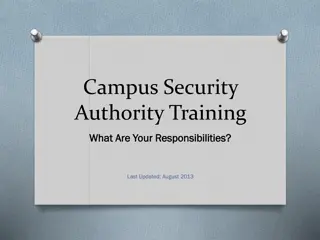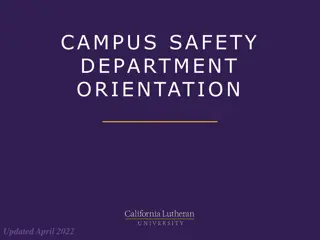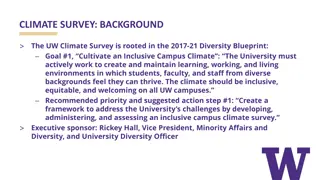Implementing Positive Changes in Campus Climate
Campus climate refers to the atmosphere in which learning occurs and encompasses perceptions and attitudes regarding diversity. Implementing positive changes in campus climate involves addressing key components like curriculum, teaching methods, professor-student relationships, and supportiveness. It is important for attracting students, enhancing learning outcomes, increasing retention rates, and promoting inclusivity. Responsibility falls on organizational and institutional levels, including administration, diversity offices, and departments.
Download Presentation

Please find below an Image/Link to download the presentation.
The content on the website is provided AS IS for your information and personal use only. It may not be sold, licensed, or shared on other websites without obtaining consent from the author.If you encounter any issues during the download, it is possible that the publisher has removed the file from their server.
You are allowed to download the files provided on this website for personal or commercial use, subject to the condition that they are used lawfully. All files are the property of their respective owners.
The content on the website is provided AS IS for your information and personal use only. It may not be sold, licensed, or shared on other websites without obtaining consent from the author.
E N D
Presentation Transcript
CAMPUS CLIMATE: Implementing Positive Changes
Introduction SUCCESSES: Completion of Campus Climate Survey: http://www.csun.edu/senate/reports/climatesurvey042210.pdf http://www.csun.edu/senate/reports/campusclimatesurveyresults0 51012.pdf RECOMMENDATIONS made as a result of the survey Establishment of Campus Climate Assessment Subcommittee Changes made in Academic Assessment & Program Review Office
What is it? Campus climate refers to the atmosphere in which learning occurs. Source: Bartle, E., Ballard, S. L., Masequesmay, G. (2010). Identifying Queer allies: The impact of ally training on campus climate. ERIC Database. Campus climate is the current perceptions and attitudes of faculty, staff, and students regarding issues of diversity on a campus. Source: Rankin, S. R., & Reasons, R. D. (2005). Differing perceptions: How students of color and white students perceive campus climate for underrepresented groups. Journal of College Student Development, 46 (1), 43-61. A campus climate is defined as behaviors or interactions within a workplace or learning environment that can influence whether an individual feels personally valued and treated fairly. Source: adapted from the 2005 report by the Presidential Task Force Team on Campus Climate at Stony Brook University by CSUN
Key words to consider Definition terminology gives direction for implementation. Some key terms from the definitions in the literature are: Welcoming? Challenging? Fair? Supportive? Safe? Inclusive? Justice? Diverse? Student Centered?
Key Components of Department Climate curriculum, teaching, professors as mentors or role models, advising, supportiveness of professors, working relationships with professors, and working relationships with students Reference: Ivie, R., & Nies, K. (2004, June). Does it matter where I go to college? Effects of physics departments on student outcomes. American Institute of Physics AIP Report. AIP Pub. Number R-433.03. Retrieved: http://www.aip.org/statistics/trends/reports/bachplus5c.pdf
Why is campus climate important? Attracts more students Enhances learning (students perform better in atmosphere of affirmative and appreciation) Increases retention Raises graduate rates People from historically oppressed groups perceive climate as more hostile than do the groups that oppress
Whose responsibility is it to implement? Organizational / Institutional Level: Administration, Diversity Office, Department Level, Curriculum Level, Co-Curriculum Level (Invited Presentations, On-Campus Living; Student Organizations; Health Centers, Police) Key Players: Faculty, Staff, Students, Administrators Policy: Mission, Program Review, Assessment Does one size fit all?
Where is the point of entry? Institution Community Ground Up Top Down
Points of Entry & Key Needs/People/Groups Diversity in Mission Statement: Diversity Goals & Objectives Administration: Chief Diversity Officer; Diversity Standing Committee, Financial Line, Incentives; Community Engagement/Inclusiveness Classroom & Co- Curriculum Department & College Student Driven
